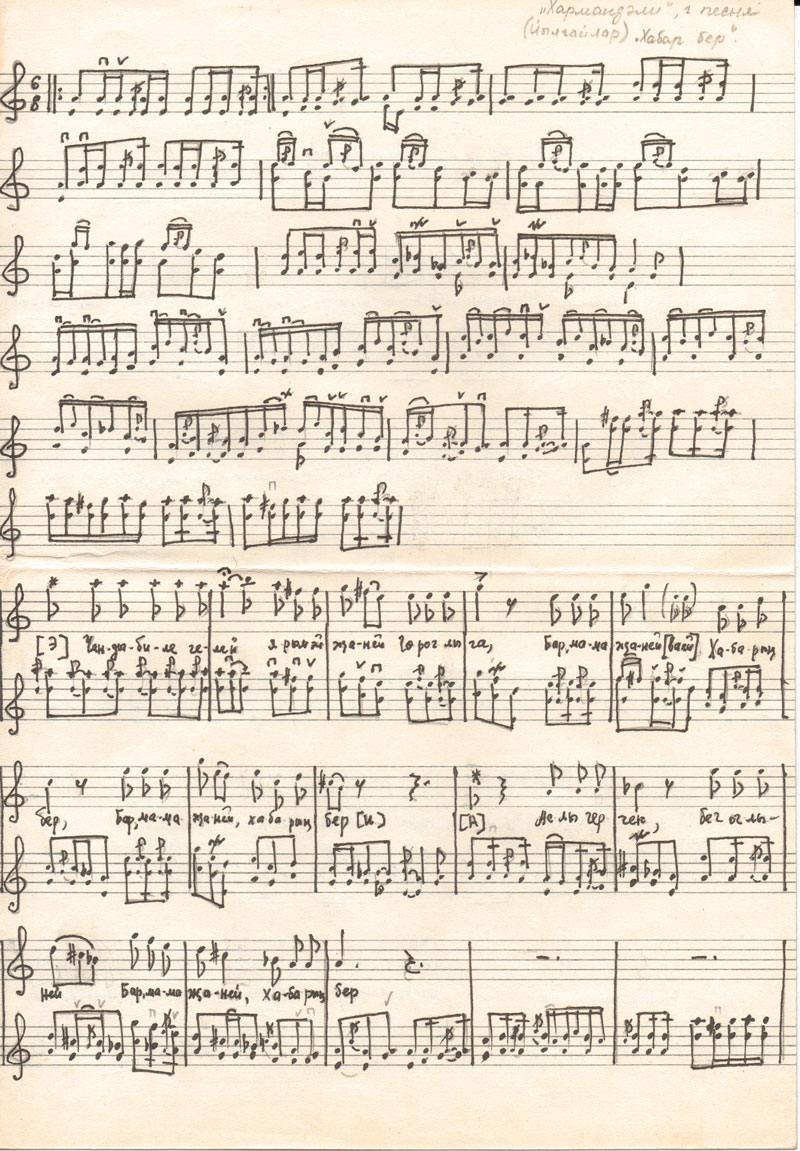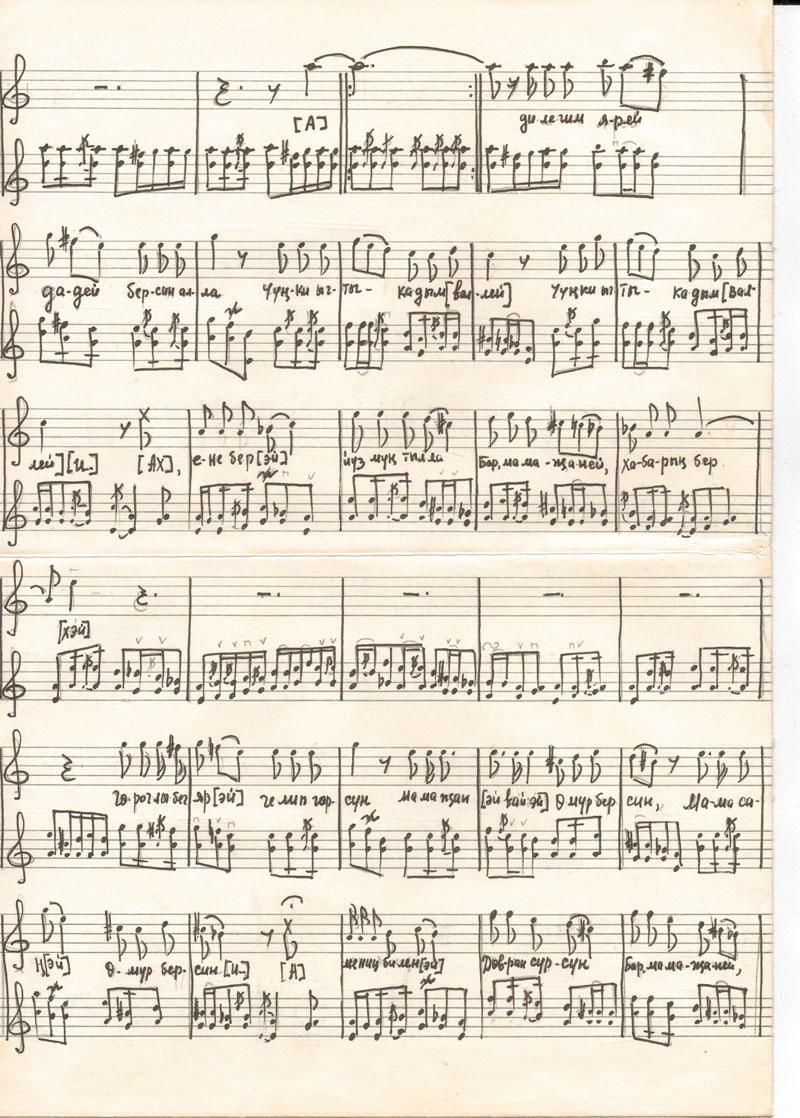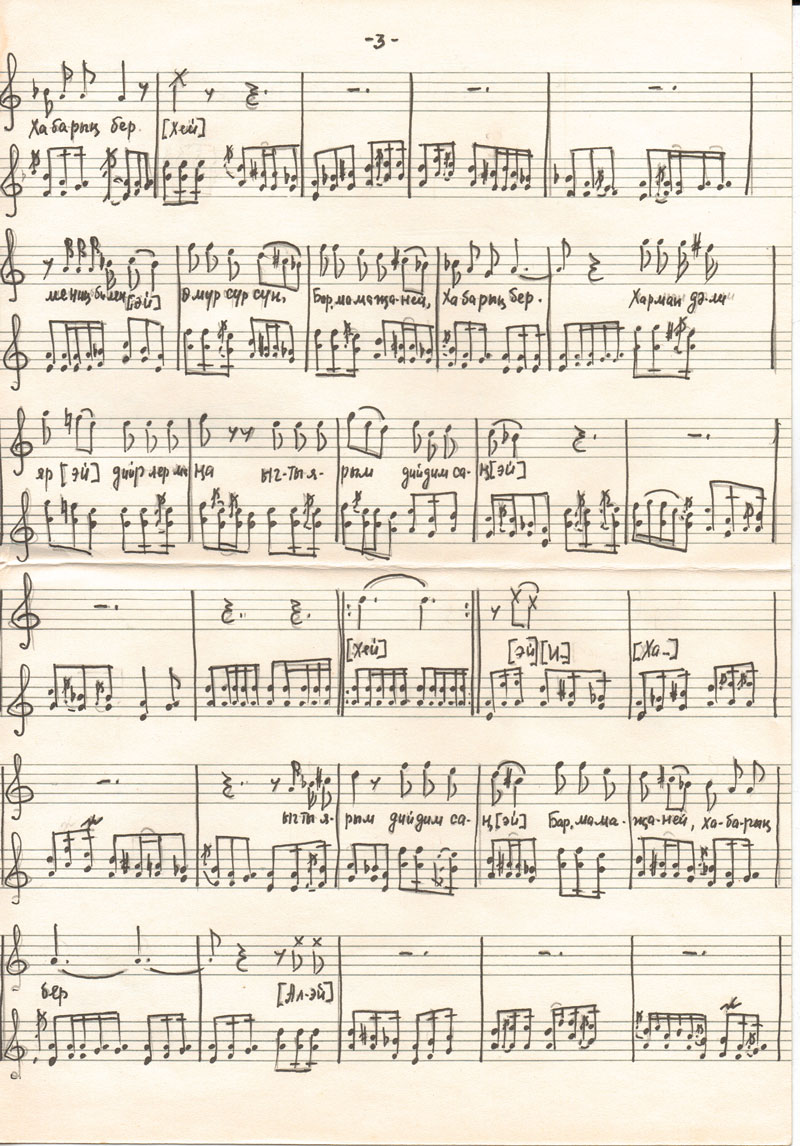Prosimetrum: The form of hikâye and dāstān
Turkish âşık and Central Asian bakhshi
The role of music in hikâye and dāstān
Bar mama-jan, ey-vaey, khabarıng ber,
Bar mama-jan, ey, khabarıng ber!
Aslı gerchek beg oglın(a)-ey,
Bar mama-jan-ey, khabarıng ber!
Dilegim, yar-ey dad-ey, bersin alla,
Chünki ıgtıkadım, valley,
Chünki ıgtıkadım, valley!
Akh, Yene berey yüz müng tılla!
Bar, mama-jan-ey, khabarıng ber!
Göroglı beg, yar-ey, gelip görsün!
Mama-jan, ey-vaey, ömür bersin,
Mama sang(a)-ey ömür bersin!
A, Mening bilen-ey dövran sürsin!
Bar mama-jan-ey, khabarıng ber!
Kharman-dәli, yar-ey, diyirler manga,
Igtıyarım diydim sang(a)-eı.
Ey, Igtıyarym diydim sang(a)-eı,
Bar, mama-jan-ey, khabarıng ber.
To Göroglı in Chandıbel
Go, mama-jan, deliver your message,
Go, mama-jan, deliver your message!
To the brave son of a beg
Go, mama-jan, deliver your message!
May God grant my wish,
Because of my faith, by God,
Because of my faith, by God!
I will give another hundred thousand pieces of gold.
Go, mama-jan, deliver your message!
May Göroglı-beg come and see,
May he give his life, mama-jan,
May he give you his life!
May he live in happiness with me!
Go, mama-jan, deliver your message!
I am called Kharman-dәli,
I have given you my permission (to leave),
I have given you my permission.
Go, mama-jan, deliver your message!




